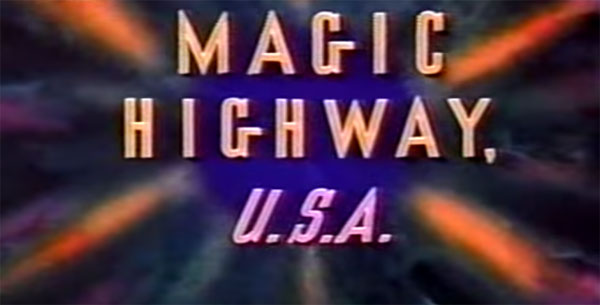
Walt Disney had a serious interest in transportation and its future; Disneyland is filled with inventive ways to move guests. This passion also held true with his TV programs; the Tomorrowland episodes often focused on challenges of traffic and population growth. His original ideas for EPCOT the city in 1966 included new ways to avoid gridlock and allow for efficient movement. Eight years earlier, the “Magic Highway, U.S.A.” episode tackled a similar subject but from a different perspective. We learn about the history of transportation and possibilities for the future.
Originally airing on The Magical World of Disney on May 14, 1958, this episode offers a surprisingly direct look at the highway system. Goofy doesn’t appear for a comic short on the open road. In fact, no Disney characters or even silly animated figures appear. There are some lighter touches, but those are the exception during the stoic presentation. Walt periodically appears to guide us to the next segment, but he largely gives way to narrator Marvin Miller.
Miller’s vocal style has similarities to Gary Owens’ tongue-in-cheek narration during World of Motion. It’s especially true when the subject comes to traffic jams and the challenges of the new frontier. It’s not a coincidence that Ward Kimball wrote and directed “Magic Highway, U.S.A.”. He also designed World of Motion and brought a similar look back at transportation history to that attraction. Kimball is a master at conveying a lot of information in an interesting way. The use of vintage films and animated drawings helps liven up the proceedings in this feature.
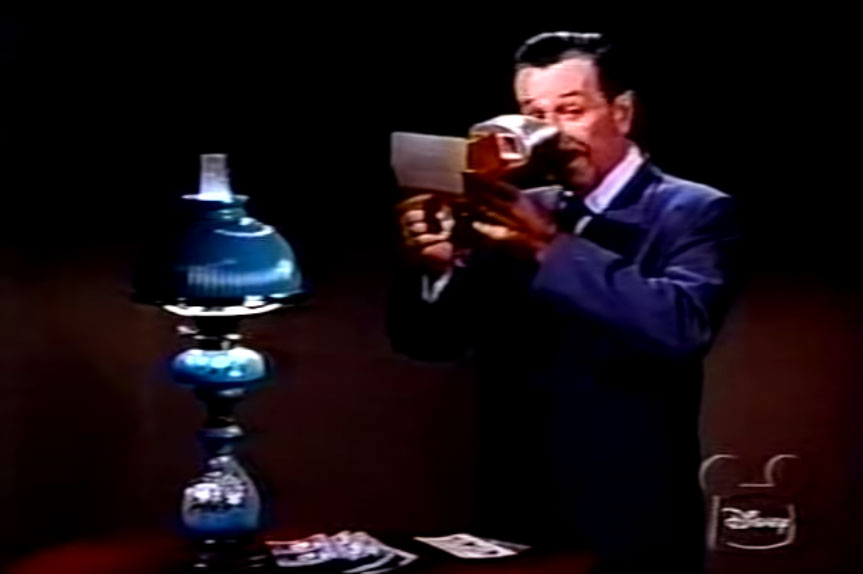
Freedom of The American Road
Our host, Walt Disney, begins the episode with clear themes about the importance of the highway. He connects the “freedom of the American road” with our “pursuit of happiness“. This might seem like a contradiction during the later segments about serious problems with traffic. Walt’s points set up this commercial for the highway system, which is here to support our freedom. That’s the overall concept, at least. To understand the American road, we must first look to our past.
Walt steps aside for simple animation of early days of transportation that definitely brings World of Motion to mind. Our next stop is the horse and buggy and ultimately the “gasoline buggy“, which gets lots of attention in vintage films. These fun segments include comic shots of cars driving on railroad bridges, across pipes, and through lots of mud. We also hear gender stereotypes with women worried about dust protection while men are concerned with road conditions. This section really pushes the ideas that early roads were disgusting, and I can’t argue with that assumption.
What makes these scenes more than a dry history lesson are light-hearted shots of traffic cops and others struggling to maintain order. It also conveys the idea of a “world on the move” as the advances take over. Even so, it’s also a sad look back at the beginnings of industrial ruin and environmental destruction. You could view the footage of mass production and the assembly line as the beginnings of a horror film. The biggest traffic jam in history fits that description, especially with geese and cattle interspersed with shots of overcrowded roads. It’s a frightening experience!
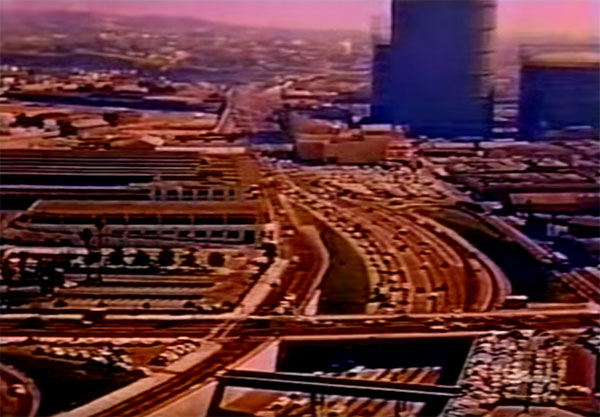
The Highway as a Lifeline
Now that we understand the situation, Walt introduces a stoic expert who describes the U.S. highway as the “most modern in the world today“. There is some serious American exceptionalism happening, and thankfully this guy only appears briefly. It’s time to learn more about the massive building project following the Federal Aid Highway Act. Passed in June 1956, it created the largest public works project in American history to that point.
Based on even the basic overview in this episode, I can’t imagine the complexity needed to build this system. The idea of moving mountains, especially in the 1950s, is really something. It’s interesting to note how this episode glosses over the need to destroy houses for the highway. We hear about changes for the “right of way“, but it’s all in the name of progress.
It’s still impressive to witness such a massive infrastructure project. I take the highways for granted here and often just grumble about traffic, but they’re a necessity to move around St. Louis and beyond. Walt Disney World wouldn’t be such a popular destination without the ease of access. It definitely made our family road trips possible when I was a kid in the ’80s.
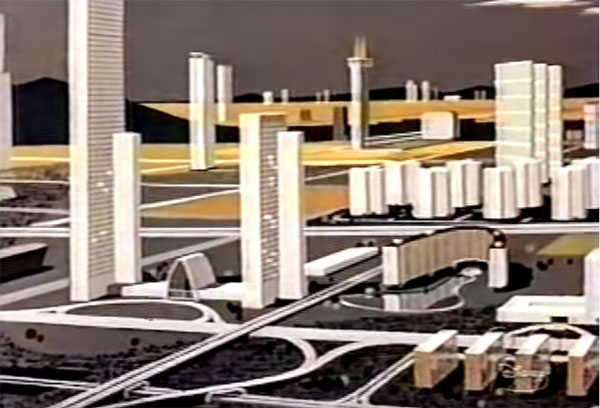
Exciting Future Possibilities
The highlight of “Magic Highway, U.S.A” is the final segment, which presents ideas for the highway of the future. Animated drawings and scenes reveal concepts that sometimes feel ridiculous. Our highways today aren’t multi-colored and don’t have radiant heat to keep the roads dry. I don’t suspect we’ll see tunnels with highways crossing the ocean anytime soon. The image of super speed transcontinental motorways induces fears more than excitement in my mind.
Other ideas seem more practical and even connect to what we have today. Self-driving cars are mentioned, though within the familiar context of the nuclear family. Father heads to the office, while Mother and Son go shopping. Let’s get a little more inventive here! We also see moving sidewalks and even the rear camera, though it’s for more than parking. Walt stresses that all the ideas are possible, though parts feel more like the descent on Spaceship Earth than feasible strategies.
“Magic Highway, U.S.A” concludes with a shot of cars driving towards a massive sun and the bright future. That sense of optimism is what resonates with me from this episode. I’m not obsessed with cars and see challenges with glorifying the highway, but it did help create our modern world. It’s interesting to go back 62 years and see how Disney presented this ongoing project. It also shows how they were tackling pretty heady subjects for an entertainment program. I’m curious to dig further into these types of episodes in future articles. There is definitely a lot to uncover from this era.
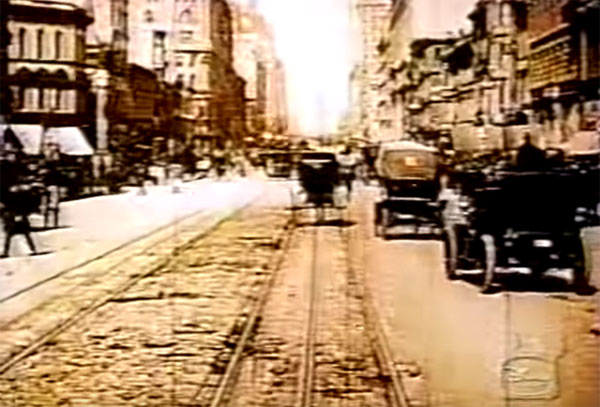
Related Articles: Magic Highway, U.S.A.
A Thrilling Future: Disney’s Man in Space Episode



Leave a Reply